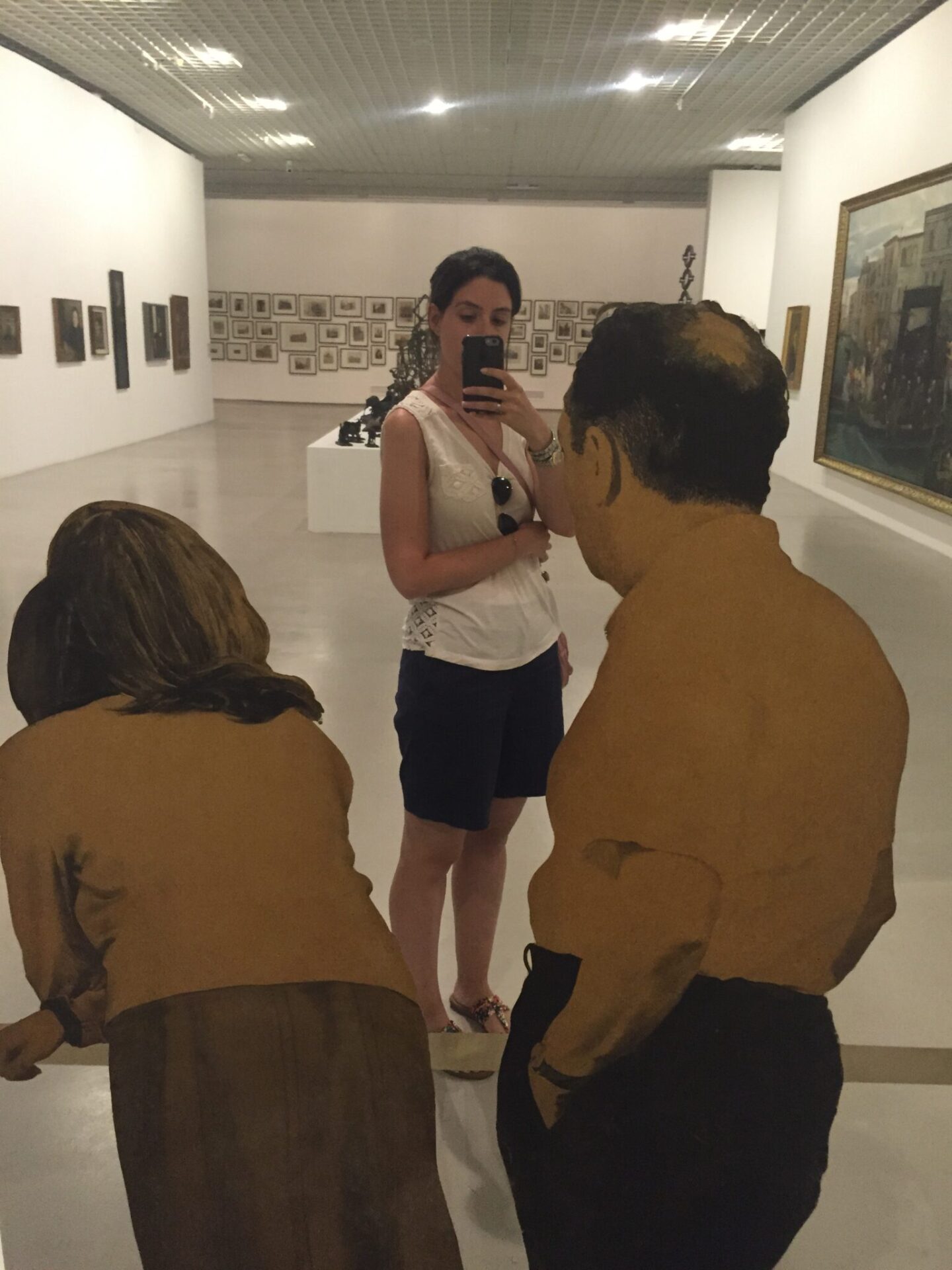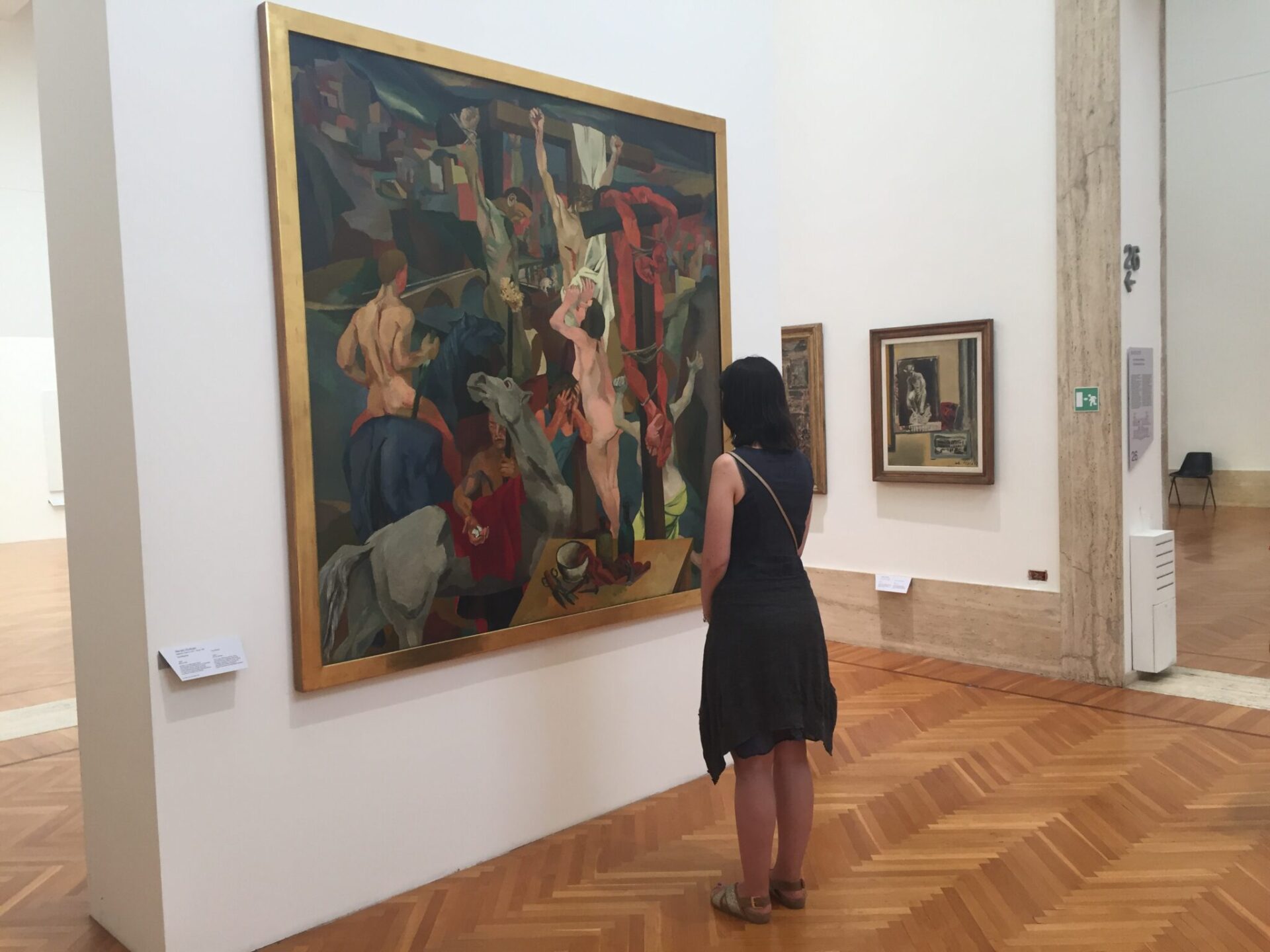What do you find most interesting about Art History?
I have always been drawn to the ways in which works of art relate to their social context of production. Specifically, how artists negotiate, question, and reimagine particular structures of society alongside their underlying power dynamics and political ideologies through medium, subject matter, and stylistic choices. Furthermore, the biographies of artworks—the way they are received over time, reused, destroyed, canonized, and legitimated—has always fascinated me. Studying Art History allows us to see the integral role art (and artists) play in shaping how we understand and relate to the world, as well as how to imagine it anew: more transparent, more just, and more inclusive.
What is your project’s goal?
My research project at CIMA will consider Schifano’s relationship to realist currents, both domestic and international. Although in the Italian artistic context the term ‘realism’ denotes a historically polarizing style of figuration of the 1950s closely tied to Soviet socialist realism, the term regained traction on both sides of the Atlantic in the early 1960s. In Europe, critic Pierre Restany began theorizing a movement he called Nouveau Réalisme in 1960, which gathered a loose grouping of artists variously interested in contemporary social reality. A few years later in 1962, an exhibition held at the Sidney Janis Gallery in New York presented a variety of artists, including Schifano, under the heading “The New Realists.” I will shed light on Schifano’s relations to Italian realist artists, such as Renato Guttuso, as well as to figures associated with Nouveau Réalisme through close visual analysis and attention to contemporary criticism.

Have positive outcomes or new unexpected things that arose from ‘going remote’ surprised you?
Due to the pandemic, most of CIMA’s activities are remote. As a result, I have been giving virtual tours of the Schifano exhibition to college students around the country. The experience has been immensely rewarding: I am reaching a large audience who would not otherwise be able to visit CIMA in a group setting and may not have an art history background already. My tours are tailored to individual classes and are in both Italian and English. Despite the screen fatigue, the students have been incredibly enthusiastic and have made really excellent and thought-provoking observations about Schifano’s work! Though it was brought about by difficult circumstances, I am really happy to have had the opportunity to lead these virtual tours. In this way, the shift to digital platforms has enabled me to contribute to expanding CIMA’s outreach and, in so doing, discuss Schifano with a broader, more diverse public. The range of perspectives from the participants has enriched my understanding of Schifano, allowing me to see Schifano’s work in new and interesting ways.
Are there many (and if so which ones) drawbacks to having to go fully remote for your research?
One important drawback has been the inaccessibility of artworks due to museum closures. Close looking is fundamental to art historical research and can often reveal aspects of works that are indiscernible in photographic reproduction. Schifano, in particular, was a very innovative painter with a special interest for the materiality of his work. CIMA’s exhibition setting offers a rare opportunity to appreciate these unique procedures in an in-depth manner.

Where did you spend the height of the COVID pandemic and what helped you ‘cope’?
I spent the first lockdown in Rome and focused on my dissertation. I was able to write quite a bit, especially since my usually bustling neighborhood quickly fell silent. Virtual contact with friends and family helped immensely. A few days into the lockdown, some friends living in Rome established a regular videocall that became known as “Teletea.” We would update one another on our days and swap recipe ideas for dinners. It was a comforting and supportive conversation that I really cherished throughout the lockdown period. Physical exercise—pilates and yoga—was also a lifesaver!
